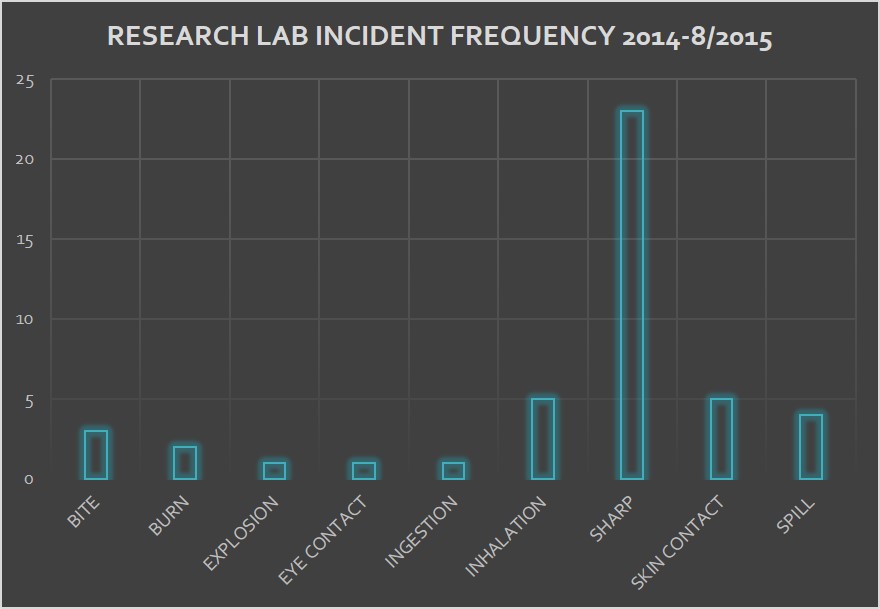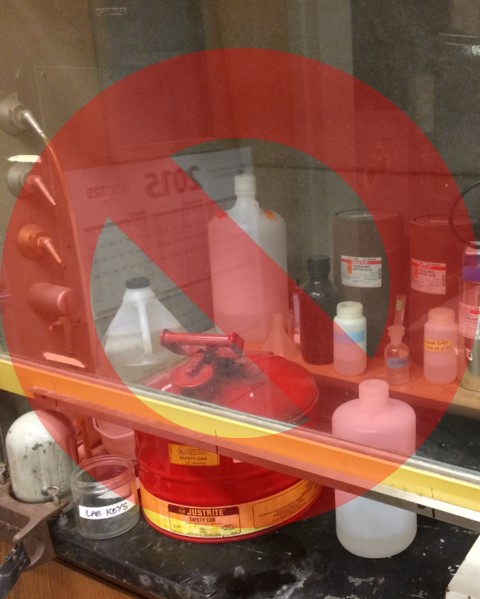factsheets-FAQEWFSpecs
qwang2Emergency Washing Facilities:
Specifications, Responsibilities, & Training
Emergency washing facilities (EWF), such as eyewashes and showers, are needed where employees may be exposed to corrosive, strong irritant, toxic, or skin-absorptive chemicals that could injure the eyes or body.
Specifications
EWF are designed to provide copious amounts of water to wash contaminants from the eyes and body and should meet the following specifications.
- Installation meets manufacturer’s requirements including criteria for water pressure, flow rate, and system testing.
- An on-off valve is capable of being activated in one second or less, remains open without the use of hands allowing personnel to use both hands to hold eyes open or remove clothing, and is capable of providing a water flow for at least 15 minutes.
- Water is the appropriate temperature to ensure that user discomfort will not discourage proper use of the equipment.
- Location is within the vicinity (no more than 50 feet) of the hazard, and it takes no more than 10 seconds to reach the EWF. EWFs using water not fit for drinking have signs stating the water is “NONPOTABLE WATER”.
Supervisor Responsibilities
Supervisors / principal investigators are responsible for ensuring the equipment is in good working order. They should:
- Follow the manufacturer’s instructions regarding operation, inspection, and maintenance of the EWF;
- Activate the eye washes and drench hoses weekly to check the proper function of the valves, hardware and availability of water. The eyewash/drench hoses should be activated until the water is clear and any debris is removed.
- Inspect the eyewash/drench hoses annually, including examination of the plumbing and ensuring water is available at the appropriate temperature, quality, and quantity. The water stream should be adequate to flush the eyes, face or other parts of the body at a velocity low enough to be non-injurious to the user.
- Facilities Operations conducts annual inspection of emergency showers.
- If self-contained eyewash equipment or personal eyewash units are used, they must be inspected and maintained according to the manufacturer’s instructions and annually inspected to check for proper operation. Self-contained systems must never hold expired fluids. Sealed personal eyewashes must be replaced after the manufacturer’s expiration date. Most manufacturers recommend replacing fluid in open self-contained eyewashes every six months and sealed containers are typically two years.
- Keep emergency washing facilities free of obstacles, allowing access in the event of an emergency. It is recommended that highly visible signs be installed at each EWF. The area should have good lighting.
- Provide personal protective equipment (e.g., chemical goggles, lab coats, long sleeve shirts, etc.) when there is the potential of chemical exposure to the eyes or body. The presence of EWF does not replace the need for personal protective equipment. Contact lenses do not provide protection from chemical splashes but can be worn safely in combination with appropriate personal protective eyewear.
- If electrical outlets are located within six feet of the EWF, ensure the outlets are equipped with ground fault circuit interrupters (GFCI).
- Train employees/students in the proper use of the EWF.
Training
In areas where an EWF is available, employees and students must be trained, including:
- Instructions on the location, proper use, and application of the EWF.
- Instructions on rinsing the eyes, holding the eyelids open and rolling the eyeballs so flushing fluid flows on all surfaces of the eye and under the eyelid. If there is a drench hose but not an eyewash station, provisions should be made to always have two or more persons in the workplace when using chemicals that could damage the eyes. One person can then assist the injured by holding and directing the drench hose while the injured party is free to hold the eyelid open. Drench hoses provide support for emergency washing facilities; however, they do not replace them.
- Instructions on reporting accidents and seeking prompt medical attention after flushing the eyes regardless of the severity of the injury.
- Documentation of the training.
Additional Information
For more information regarding EWFs (plumbed, self-contained, and personal) or PPE, see additional brochures titled “Emergency Washing Facilities-Determining Need & Location”, the Laboratory Safety Manual , Safety Policies and Procedures Manual, “Eyewashes and Safety Showers”, or Safety Policies and Procedures Manual, “General Requirements for Personal Protective Equipment.”
Getting Assistance
If the plumbed EWF does not meet the specifications, contact Facilities Operations. If you need assistance or have questions regarding EWF or PPE, contact EH&S.



